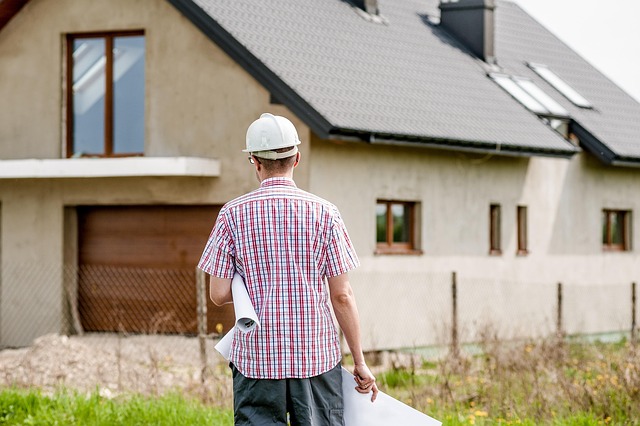Metal Roofs: A Durable Armor and a Smart Choice for Modern Architecture
Metal roofing has emerged as a popular choice for homeowners and builders seeking durability, energy efficiency, and aesthetic appeal. Unlike traditional asphalt shingles, metal roofs offer exceptional longevity and can withstand harsh weather conditions while maintaining their structural integrity. With a variety of materials and styles available, metal roofing systems provide versatile solutions for residential and commercial properties alike. Understanding the fundamentals of metal roofing, from installation to maintenance, helps property owners make informed decisions about this long-term investment in their buildings.

Modern architecture prizes materials that balance durability, energy performance, and expressive design. Metal roofing aligns with those goals by offering long service life, reliable weather protection, and profiles that range from crisp standing seams to classic, shingle-like modules. When specified and installed correctly, assemblies handle wind, intense sun, heavy rain, and snow while accommodating modern add-ons such as solar photovoltaic arrays and snow retention. With color-stable coatings and a broad finish palette, it also supports diverse regional styles and climate needs through local services in your area.
What to know about metal roofing systems
A roof is a system, not just surface panels. Core components include the structural deck, underlayments, clips or fasteners, panels, and an integrated set of flashings at valleys, eaves, ridges, and wall transitions. Standing seam systems use concealed fasteners and either snap-lock or mechanically seamed joints for enhanced weather resistance. Modular metal “shingles” can replicate slate, tile, or wood while reducing weight. High-quality coatings—commonly PVDF—help resist chalking and fading. Proper ventilation and compatible underlayments manage moisture and heat. Roof slope, substrate condition, and local building codes guide product selection, and early coordination is crucial if you plan solar or complex penetrations like skylights.
How metal roofing installation works
Installation starts with a thorough assessment of the existing roof and structure. Contractors determine whether a tear-off or an overlay is appropriate based on code, moisture readings, and warranty requirements. Underlayments and ice/water protection are installed at eaves and critical areas, followed by layout lines that control panel alignment on the most visible elevations. Standing seam systems typically use concealed clips; exposed-fastener panels require precise screw placement with gasketed fasteners. Flashings at chimneys, valleys, and walls are custom-fit to guide water away from joints. Seams may be mechanically locked for higher wind and water performance. Safe staging, weather-aware scheduling, and clear documentation by experienced local services help ensure quality.
Key benefits of choosing metal roofing
The standout advantage is durability. Properly detailed metal roofs resist uplift, shed water and snow efficiently, and can provide dependable service for decades. Many systems, paired with appropriate underlayments, offer robust fire resistance. Reflective, cool roof coatings can lower surface temperatures in sunny regions, while ventilated assemblies can help moderate attic heat. Metal’s comparatively low weight reduces structural load compared with heavier roofing types. Sustainability is a further benefit: many products contain recycled content and are recyclable at end of life. Design flexibility is broad, supporting both minimalist modern forms and context-sensitive profiles that align with neighborhood character.
Maintenance for optimal metal roofing condition
Maintenance is straightforward but important. Keep gutters and valleys clear so water can flow freely, especially after leaf drop or storms. Wash off debris and environmental buildup with soft brushes or low-pressure rinses; avoid harsh abrasives that can damage coatings. Inspect sealants and flashings annually and after severe weather. Exposed-fastener systems may need periodic replacement of aged gasketed screws. Address minor scratches with manufacturer-approved touch-up paint to protect finishes. Where snow slides are possible, consider snow guards to control movement. Trimming back overhanging branches reduces abrasion risk, and a yearly inspection by qualified professionals in your area helps catch minor issues early.
Metal roofing materials with superior performance
Material selection depends on climate, design goals, and budget. Coated steel (galvanized or aluminum-zinc alloy coated) is strong, versatile, and widely available. Aluminum offers excellent corrosion resistance in coastal environments and is lightweight, which helps on complex roof geometries. Copper provides exceptional longevity and a distinctive patina; it is often reserved for accents or premium applications. Zinc forms a self-healing patina that can mask fine scratches and contributes to long service life with a subdued, architectural appearance. Stainless steel excels where strength and stain resistance are priorities. Across all options, success hinges on quality coatings, compatible fasteners, and accessories tested for the specific environment.
Thoughtful planning drives successful outcomes. Map drainage, penetrations, and transitions early, and coordinate features like gutters, snow retention, and solar attachments so they integrate without compromising weatherproofing. Confirm manufacturer specifications against regional wind, snow, and wildfire considerations, and verify that installers have experience with the exact profile and metal you select. When the system, details, and craftsmanship align, metal roofing supports modern architecture with enduring performance, efficiency, and a refined visual presence.




